
We had
purchased tickets to see the inside of the Se Cathedral - at 3
Euros each it was the best deal in town (less than a glass of
beer on the riverfront). There were lots of folks in line
to visit the interior but the wait was actually quite
short. The interior was impressive. The construction
of the cathedral started in 1110 AD but a number of renovations
were done over the years, particularly in the 18th and 20th
centuries and the original Gothic style was updated to Baroque.
The photos below are what we saw.

The
cathedral had lots of hand-painted tile on the walls. These
tiles are called "azulejo", likely a play on the Spanish word
"azul," the word for "blue". Most of the other cathedrals
that we have visited in Europe had painted murals rather than
tile.


The
central courtyard was impressive but the effects of aging could
be seen on the rock walls.

The bell
tower was tall and if you were sufficiently motivated, you could
climb the steps to an overlook on the top. Kathleen made
the climb, neither Steve nor I did.

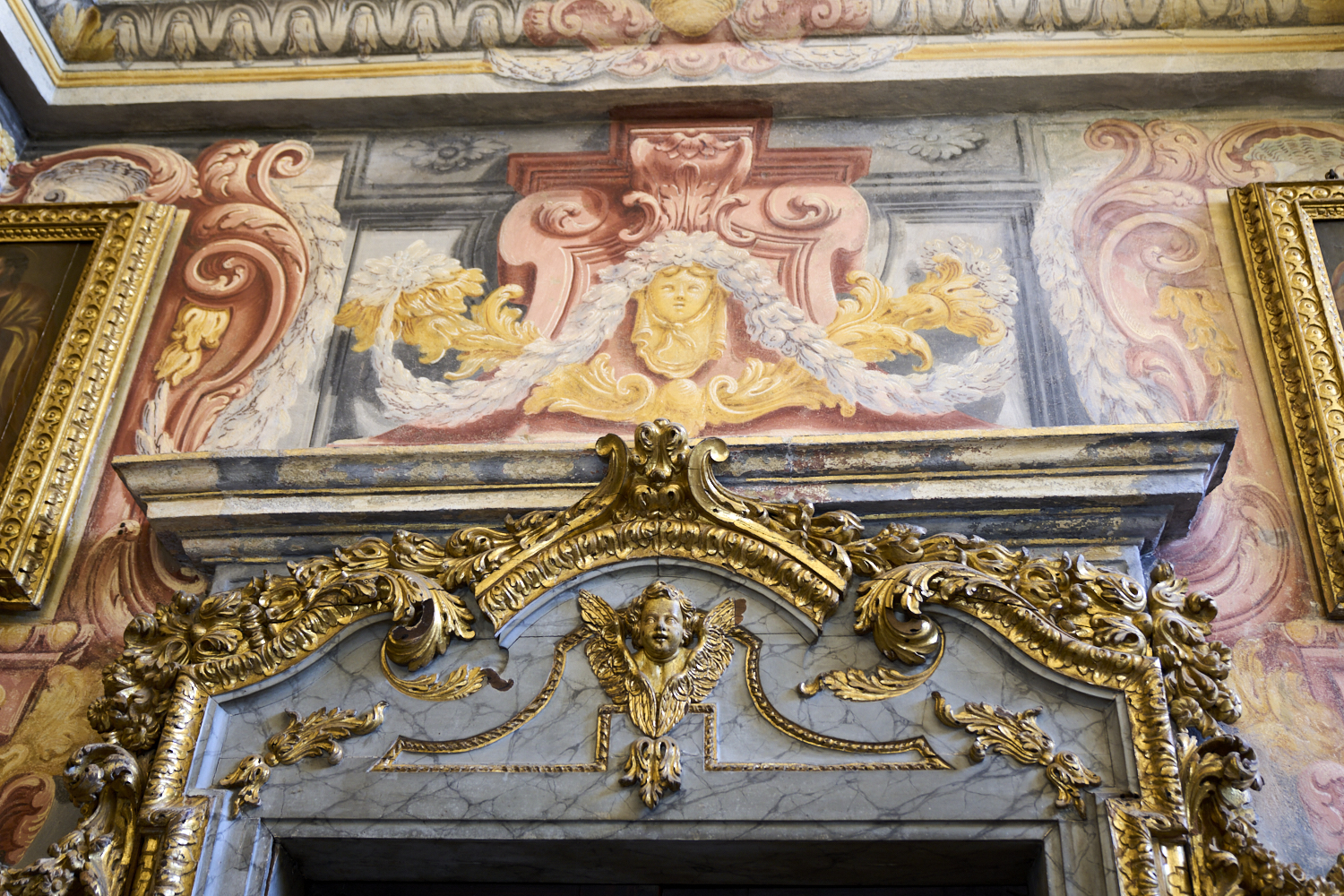
I am not
a big fan of Baroque, but the execution was impressive.

Ornate
adornments were on almost every surface.
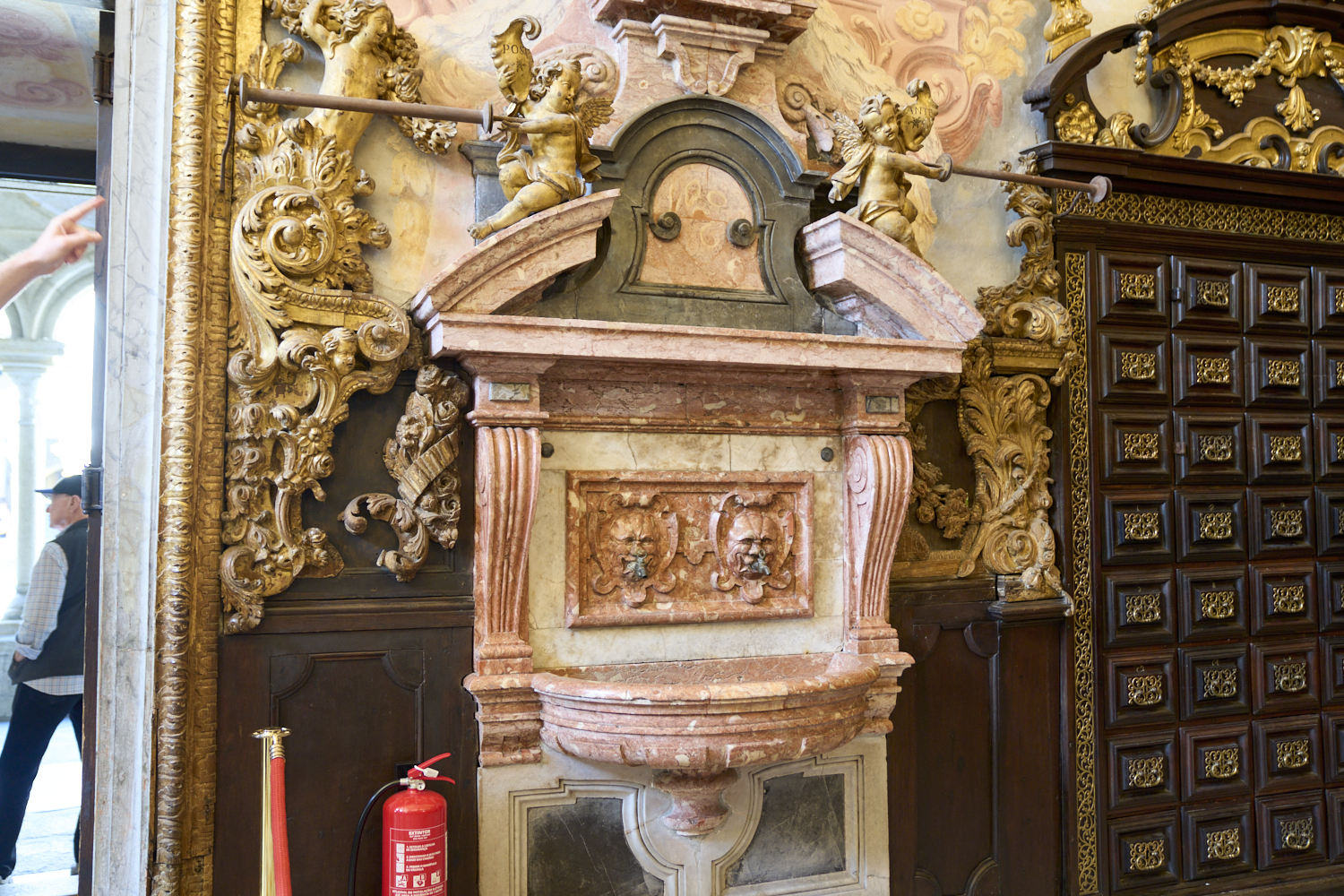
Carved
marble on the sides and above the wash basin.

Narrow
columns supported the arches surrounding the central
courtyard. Note the weathering on the walls.

More
azulejos on the corridor walls around the courtyard with
detailed carved stone arches above.

It was
quite dim in the central area of the church and it was not until
I saw this photo on a bigger screen that I could fully
appreciate the details of the nave.

The
Catholics are big into idolatry and this nave was no exception.
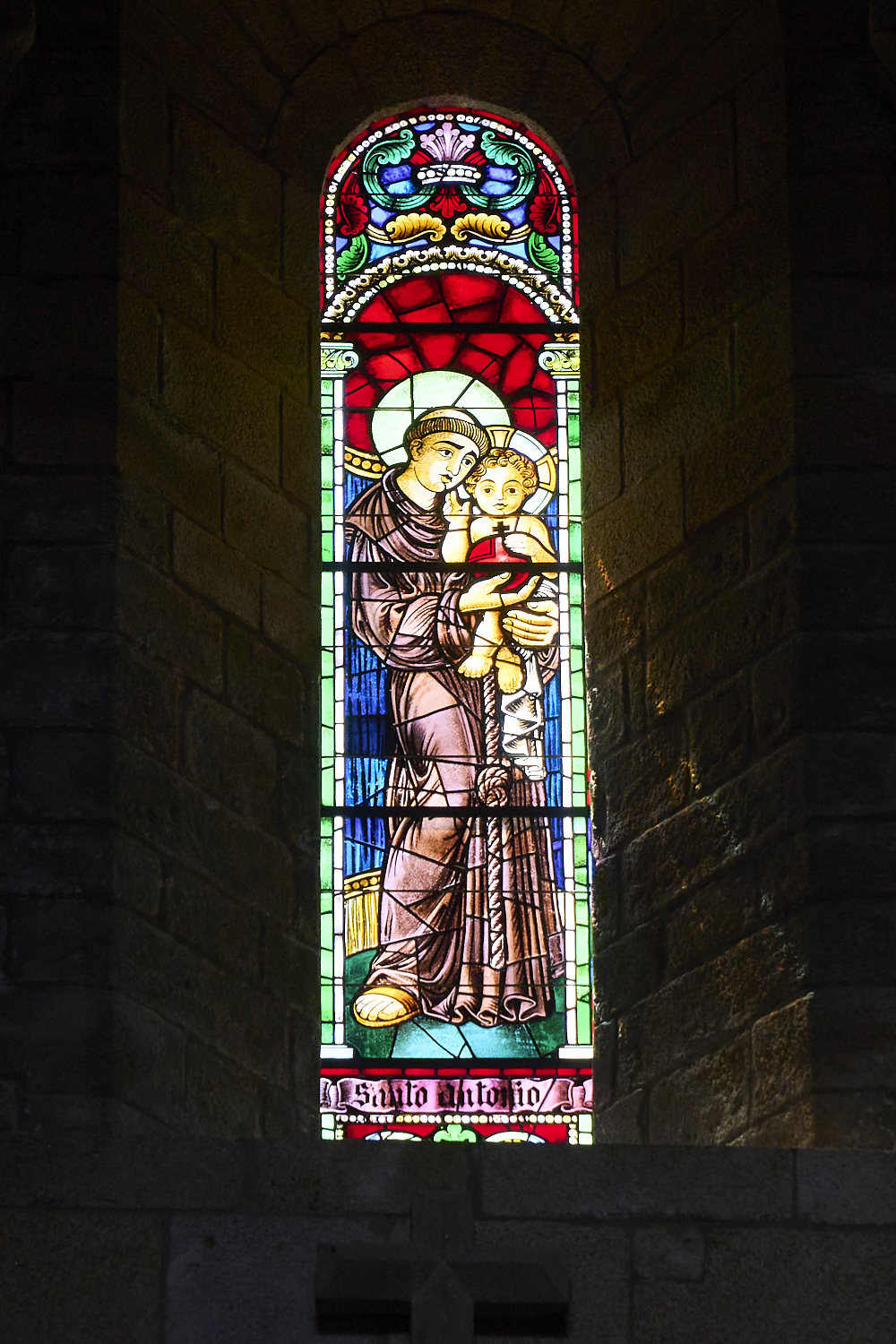
High on
the walls were some stained glass windows.

In the
other chambers there were more ornate columns and idols.
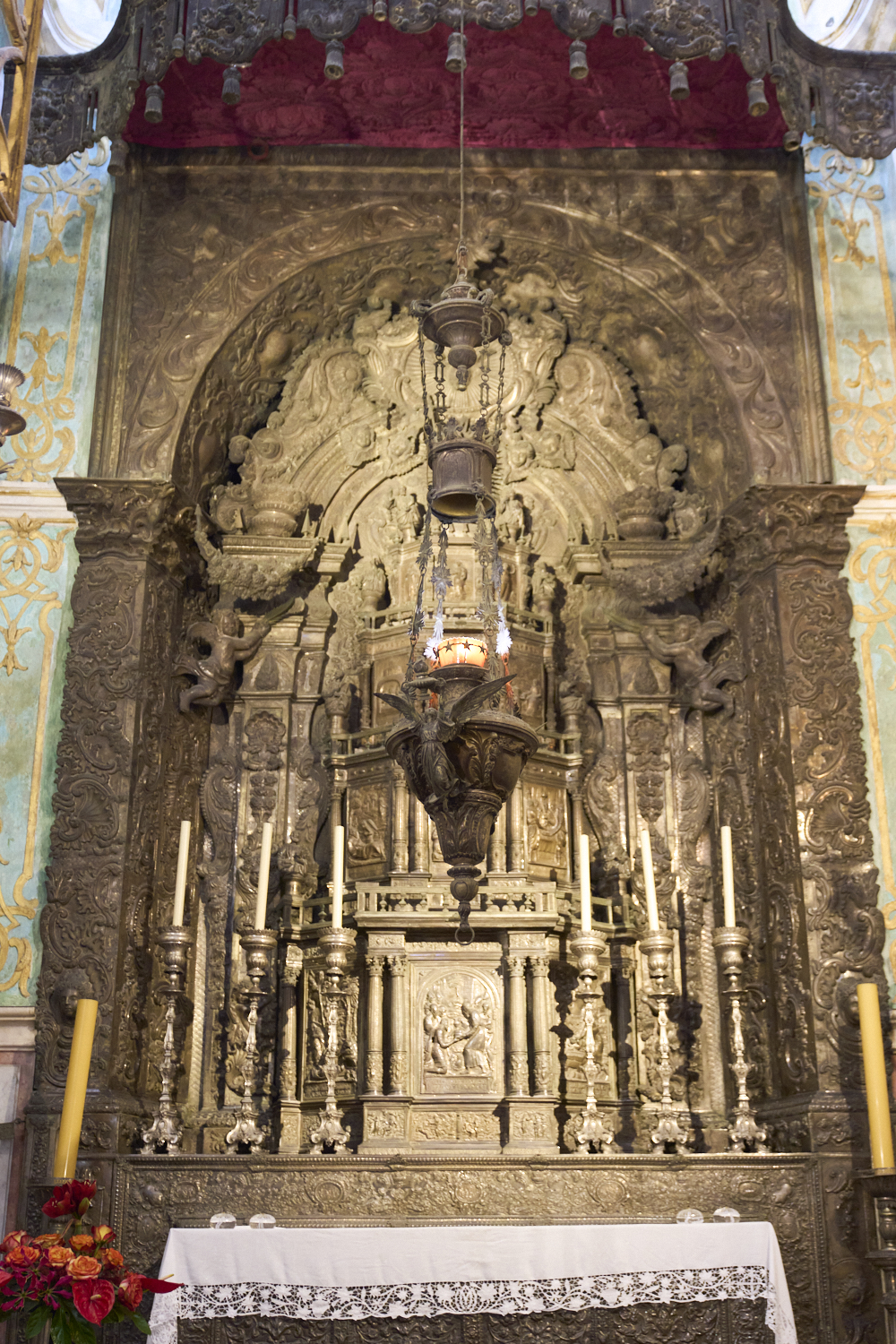
This
portion was clearly older, but just as ornate.

All
carvings of the era seemed to have cherubs. Interestingly,
they all had adult faces on small bodies.

High
above was the organ and its huge pipes in front of a multi-pane
stained glass portal.

Hard to
tell at a distance, but this is likely carved out of wood.
There are checks in the wood columns.
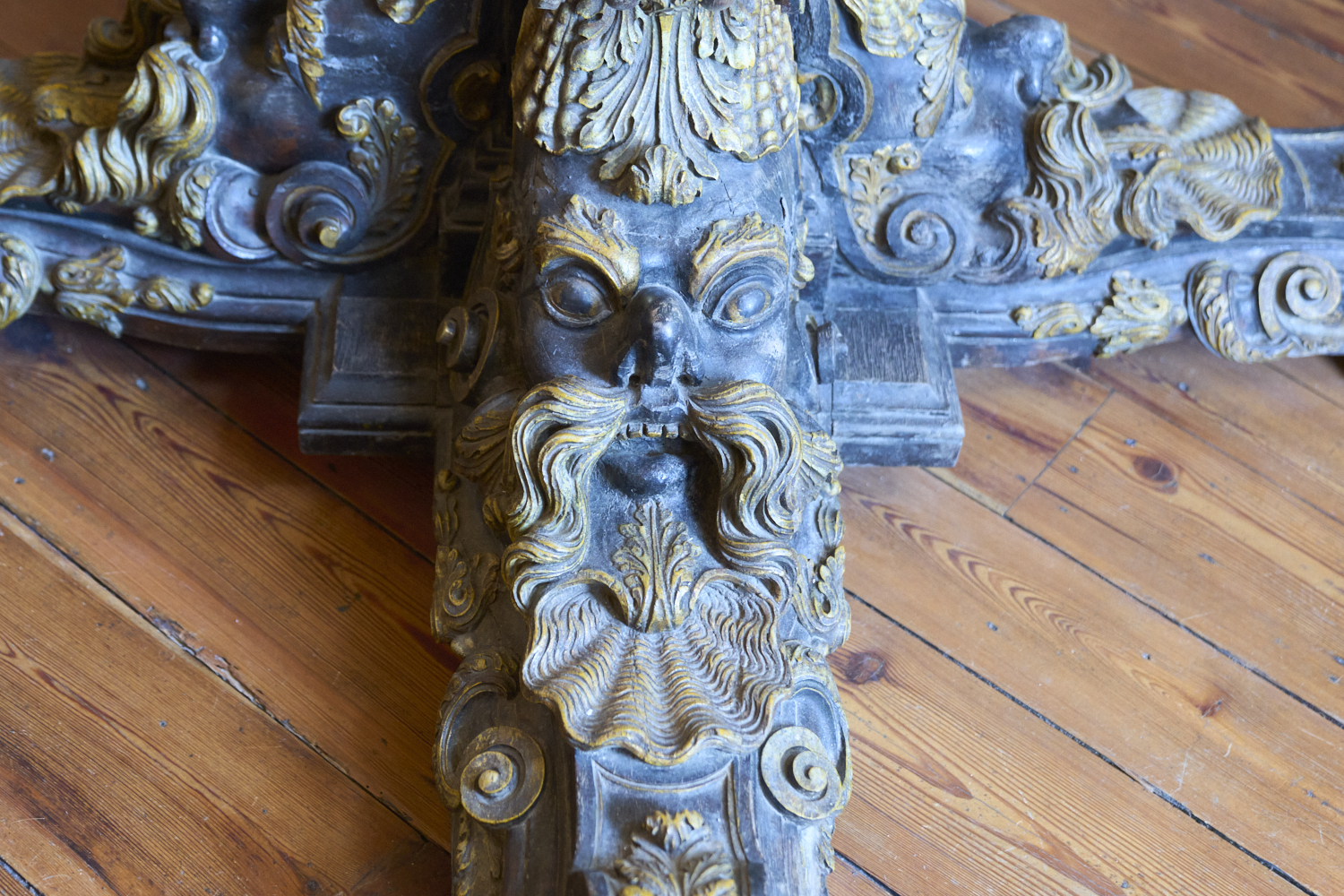
This
bible-holding podium had intricate carvings on the legs.
Hard to tell what the subject was, perhaps a demon?

The bell
tower is the spire on the left with more azulejos on the left
walls.

The
upper walls had flying buttresses to provide additional
lateral support on the tall walls.

Back
outside in the plaza we could see the tall clock tower to the
north as well as the steeples of multiple churches in the
distance.
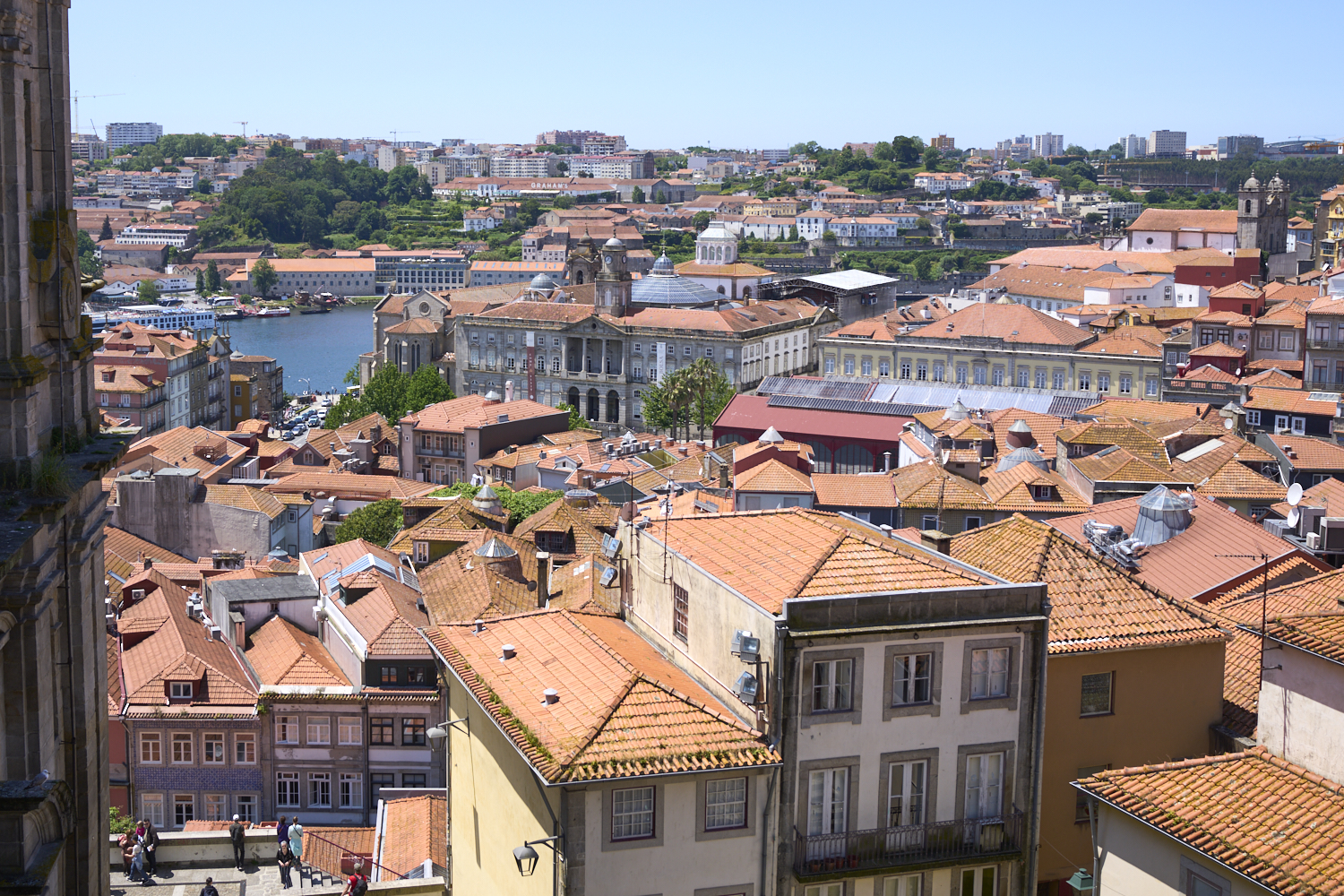
To the
southwest of the plaza we had an expansive view of a sea of
red tile roofs and the Douro River.

We
walked down the very steep path to the river. The
passages are narrow and the buildings were six to seven
stories tall, all walk-ups.

On the
river bank there was a small plaza with an odd statue.
Nothing offsets the ambiance of old buildings quite like a
satellite dish.
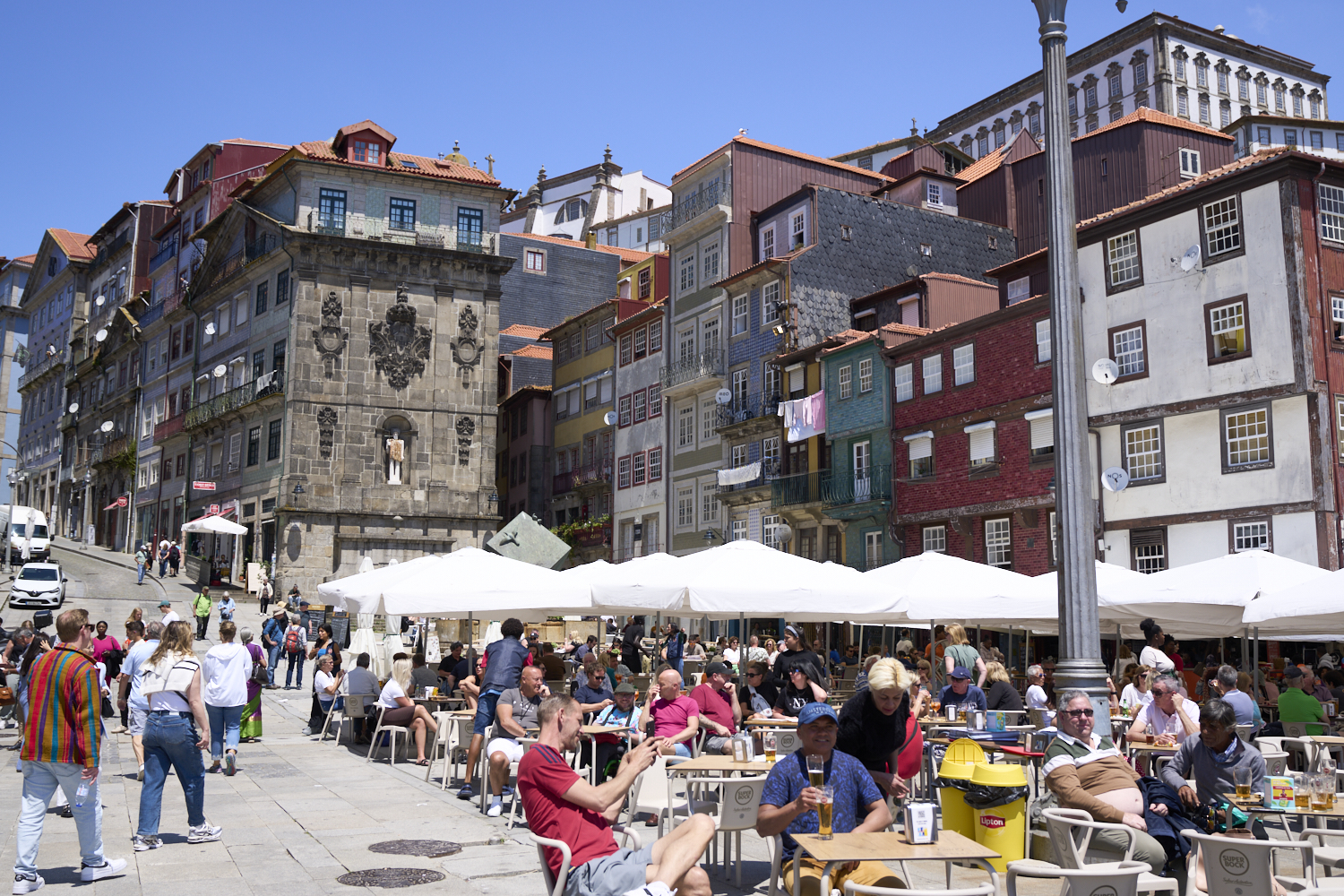
The
plaza was awash with tourists being serviced by a legion of
waitstaff. Beer, wine and tapas were the order of the
day.

From
the plaza by the river we could see the both levels of the
iron bridge with a Metro tram heading south. This bridge
was designed by Gustave Eiffel (yes, than Eiffel) and the
construction was started in 1881. His original design
was augmented to add a second level to the bridge to handle
increased traffic that resulted from Porto's growth in that
era.
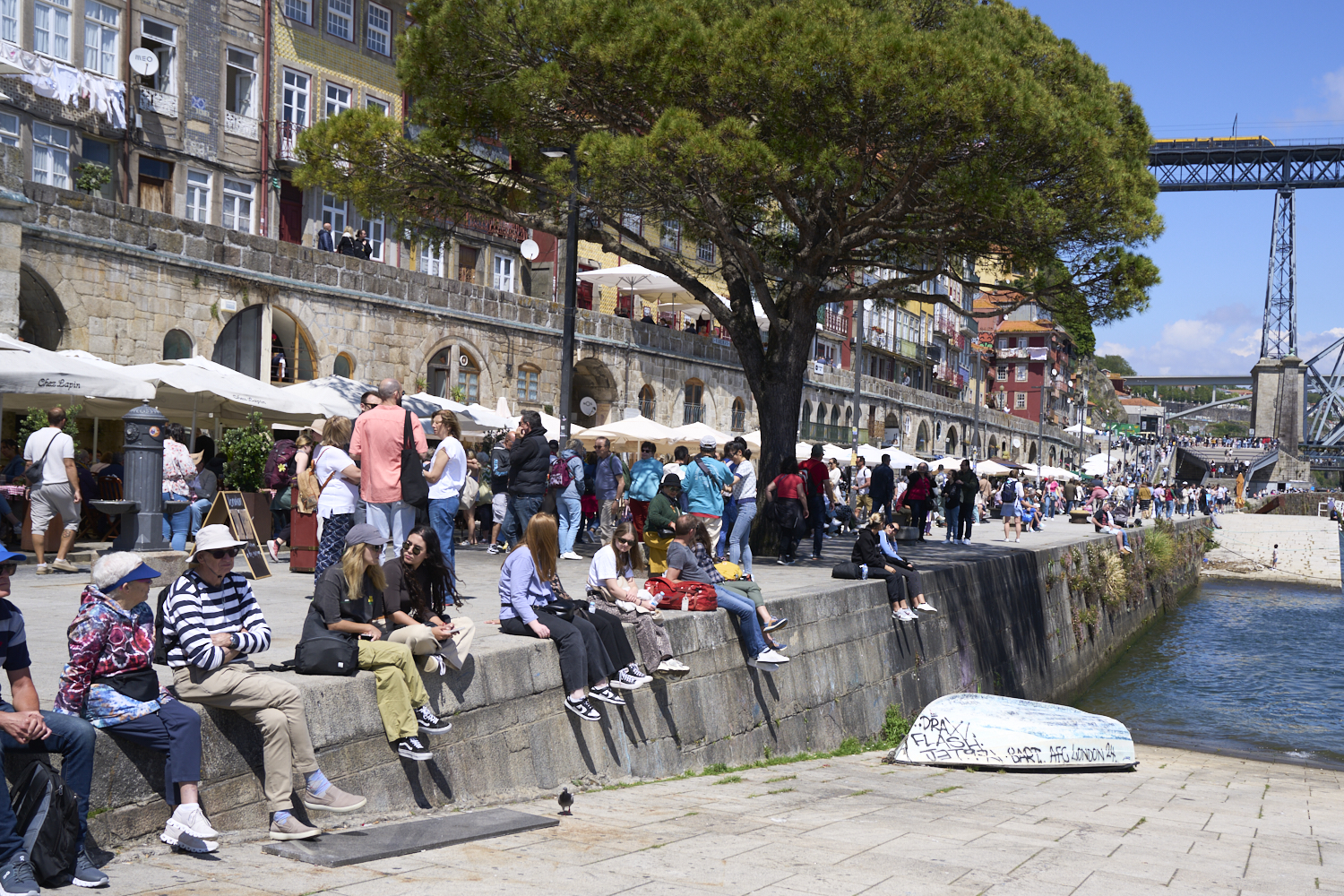
The
river walk was crowded with folks eating, drinking and just
chilling.
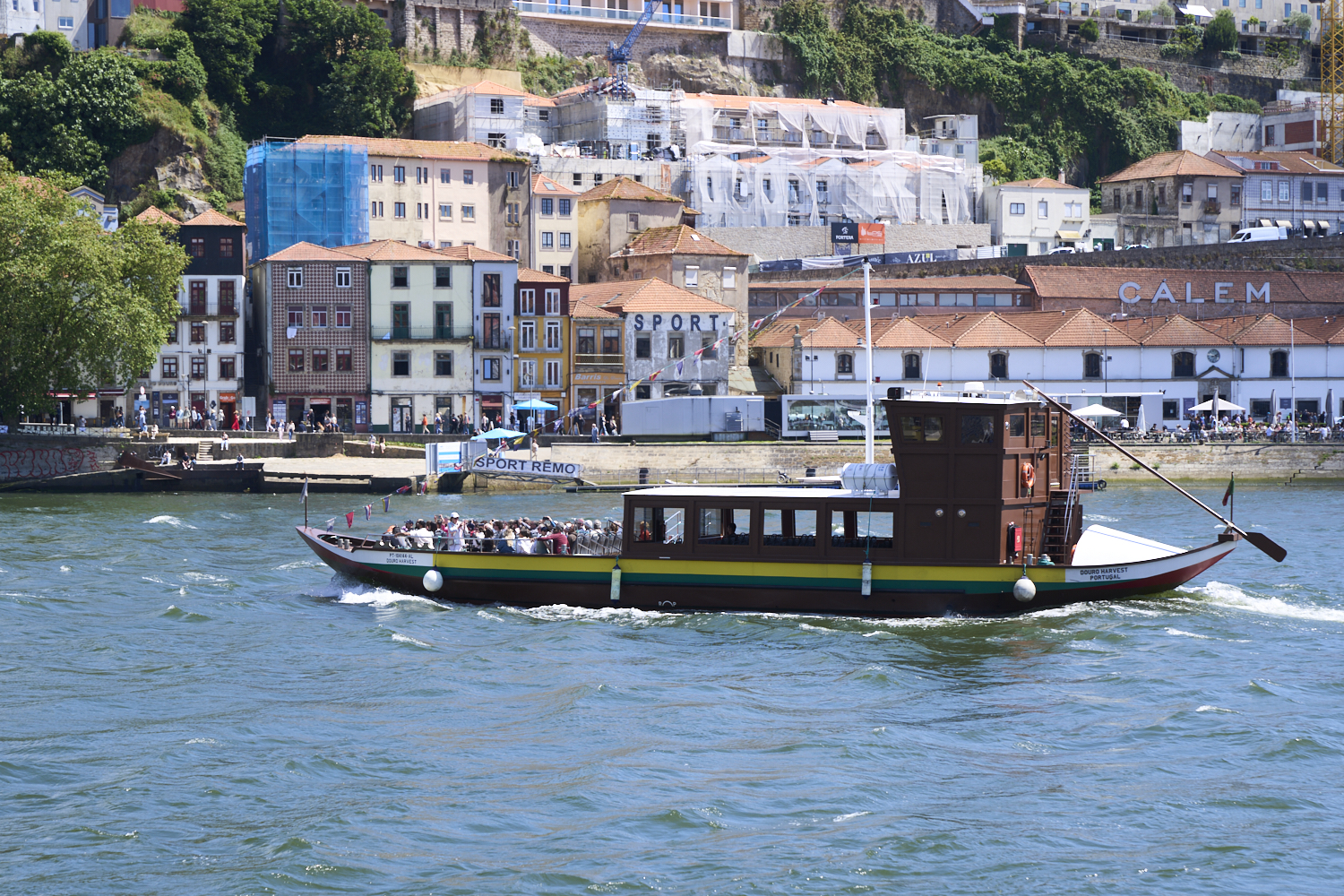
The
plaza was the loading point for many of the tour boats.

The
bridge has been well maintained and is still in active
service.


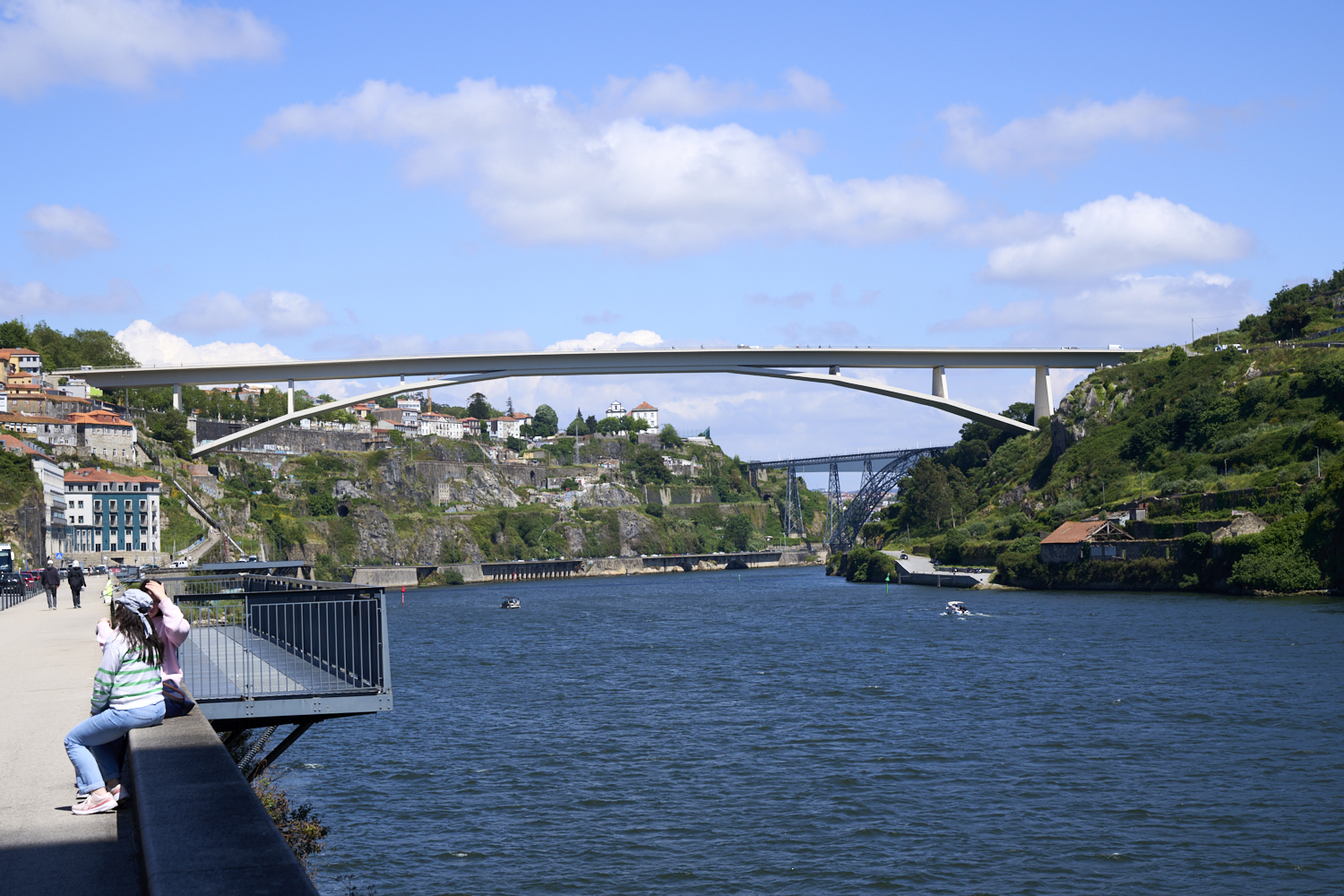

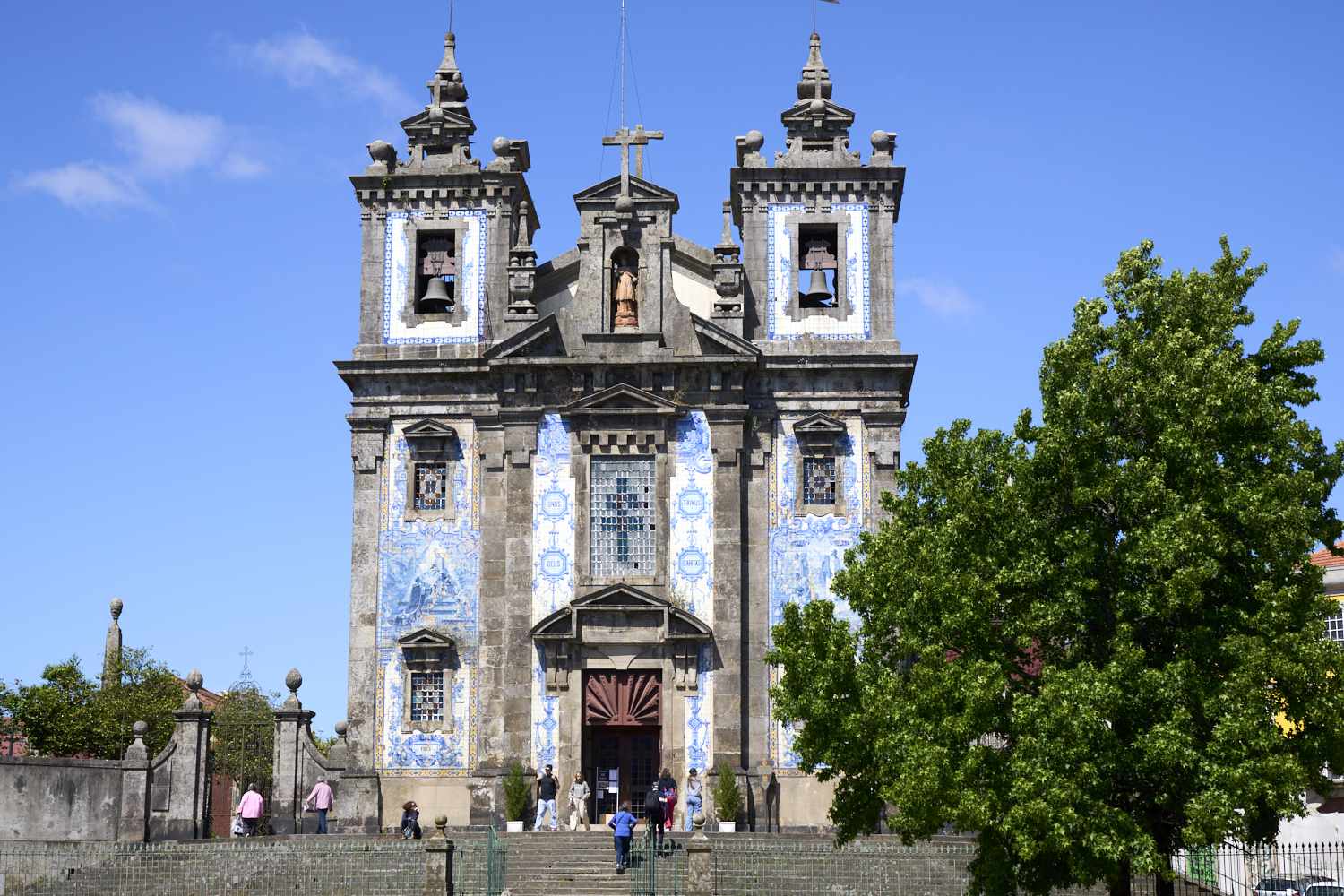
| Previous Adventure | ||
| Trip Home Page |
Photos and Text Copyright Bill Caid 2024, all rights
reserved.
For your enjoyment only, not for commercial use.